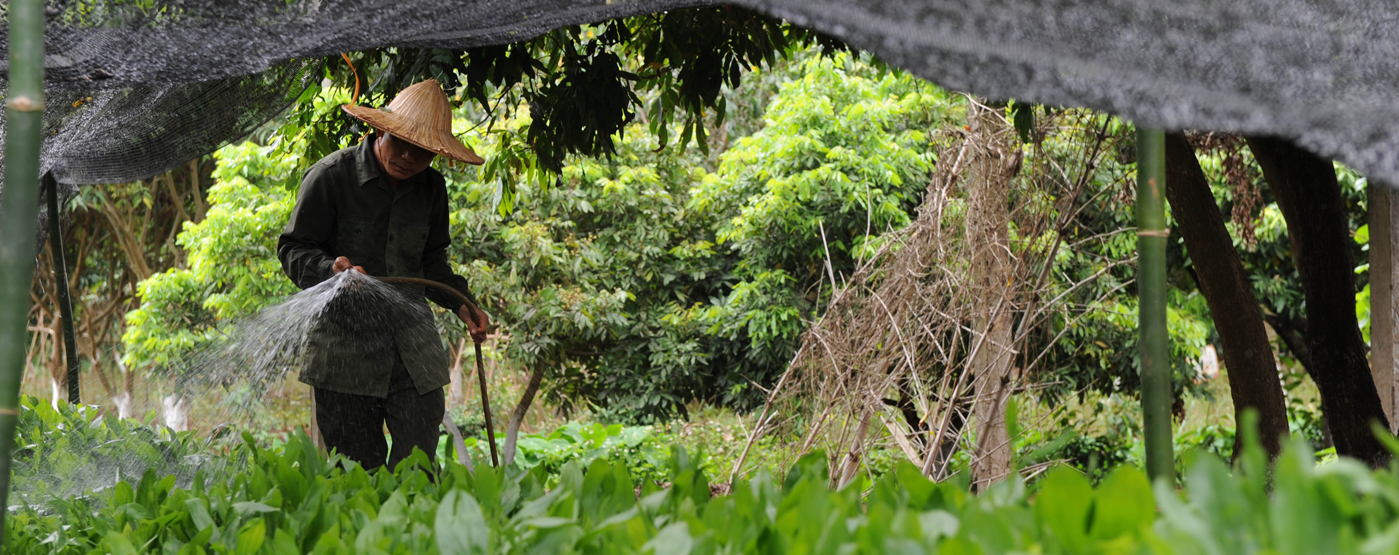
Antimicrobial resistance: does it matter for plant health too?
Antimicrobial resistance (AMR) - when bacteria, viruses, fungi and parasites stop responding to medicines designed to treat them - is a growing global threat. Most discussions about AMR focus on its impact on human and animal health where the effects, and mitigation options, are better studied and understood.
But how does AMR connect to plants?
That question remains less explored. Yet, antimicrobials, including antibiotics and fungicides, such as triazoles, are also used for plant production and protection in some parts of the world. Understanding this lesser-known link is critical to tackling AMR in a holistic, comprehensive way.
This is where the One Health approach becomes essential, recognising that the health of plants, animals, humans and the environment is interconnected. Neglecting AMR in plants leaves a potential gap in efforts to curb resistance. Here’s what’s known, what’s misunderstood, and where more attention is needed on AMR and plant health.
Are antimicrobials used in plants?
Yes. Fungicides are widely used for plant production and protection in crops and forestry. In some countries, antibiotics are also applied to certain widely consumed crops like apples, pears, citrus fruits, rice, tomatoes or potatoes to protect them from bacterial diseases. Although the use of antibiotics is limited compared to veterinary or human medicine, the exact amounts used are challenging to assess while they may still contribute to development of resistance.
Isn’t antimicrobial resistance just a human or animal health issue?
No. Bacteria and fungi that affect plants can also become resistant to antimicrobials. These resistant pathogens are threatening plant health and could lead to even more severe food losses and unsafe food. Additionally, when the antimicrobials are used on plants, residues could persist in the environment – posing broader risks. One example of how this may pose risks to human health is tulip cultivation in the Netherlands, where the use of fungicides on flowers has raised concerns about contributing to antifungal resistance in human fungal pathogens.
Can antimicrobial use in plants affect food safety?
While most countries monitor antibiotic residues in animal products, plant-based foods are far less tested. Antibiotic residues may potentially remain in crops and could be taken in by the consumer. In this context, residues are not the only concern - the presence of resistant microorganisms and resistance genes also raises potential food safety questions.
.jpg?sfvrsn=a93640c9_0)
Is AMR different from pesticide resistance?
Antimicrobials are used as pesticides. So, antimicrobial resistance is a type of pesticide resistance which is a big issue in the context of plant health. Both are forms of resistance due to exposure to one or several products that are intended to control pathogenic agents. In the case of AMR, the targets are bacteria or fungi, and the concern is their ability to develop resistance to antibiotics or fungicides - some of which are also used in human and veterinary medicine. Pesticide resistance is more broadly linked with weeds, insects, rodents or fungal pathogens becoming less responsive to herbicides, insecticides, rodenticides and fungicides.
Laying the groundwork to address AMR in plant health
Understanding where, how, and why antimicrobials are used in crops is a crucial step toward building agrifood systems that are healthy, safe, and resilient to emerging threats.
FAO is raising awareness on antimicrobial use and AMR in plant health by developing knowledge products such as factsheets on antimicrobial usage as pesticides in plant production and protection. AMR has been integrated in the Guidelines on Pesticide Legislation which provide regulatory guidance to Member States on how to address AMR in pesticide management. At the same time, FAO continues to promote integrated pest management and alternative solutions to reduce the use of antimicrobials in crops.
In 2023, FAO’s International Plant Protection Convention (IPPC) launched surveys to gather data on the use of fungicides and antibiotics in crops. Additionally, the “Plantibio” project by the European Food Safety Authority (EFSA) reviewed current literature and knowledge on antibiotic use in plants, resistance in plant pathogenic bacteria and alternatives to antibiotics. It also aimed to raise awareness on the topic through scientific communications. Meanwhile, FAOSTAT continues to track data on pesticide use in agriculture, including fungicides and bactericides.
To build on these initiatives, and to address a critical and longstanding data gap, FAO has developed a dedicated questionnaire to collect both quantitative and qualitative data on antibiotic use in plants on a yearly basis. Integrated in the InFARM platform, this new questionnaire will be launched in 2025 – providing data needed to better understand the associated risks.
Including plant health into global discussions on AMR is essential. It strengthens the One Health approach and helps protect the future of food and the planet.
The way forward - filling the gaps and scaling solutions
To better understand antimicrobial resistance in plant health, more data, greater awareness, and more sustainable plant protection strategies are required.
- The first step is better monitoring. Tools like FAO’s InFARM platform can help countries generate the data needed to track antimicrobial use in crops and support early warning while moving towards integrated surveillance systems.
- Awareness is another gap - many farmers and decision-makers don’t realise that AMR affects plants, too. Stronger cross-sector communications and capacity building of extension officers and farmers are needed.
- Better policies and practices, recognising antimicrobial use in plants, should be developed and implemented at national level.
- Sustainable alternatives need to be scaled up. That includes investing in research on biological control agents like beneficial bacteria or fungi, as well as integrated pest management.
This work is guided by the FAO Action Plan on AMR, which provides a strategic framework for addressing AMR across agrifood systems. FAO will continue to support countries in closing data gaps, promoting sustainable alternatives and ensuring cross-sectoral collaboration on AMR - recognising the vital role of plant health in One Health.
